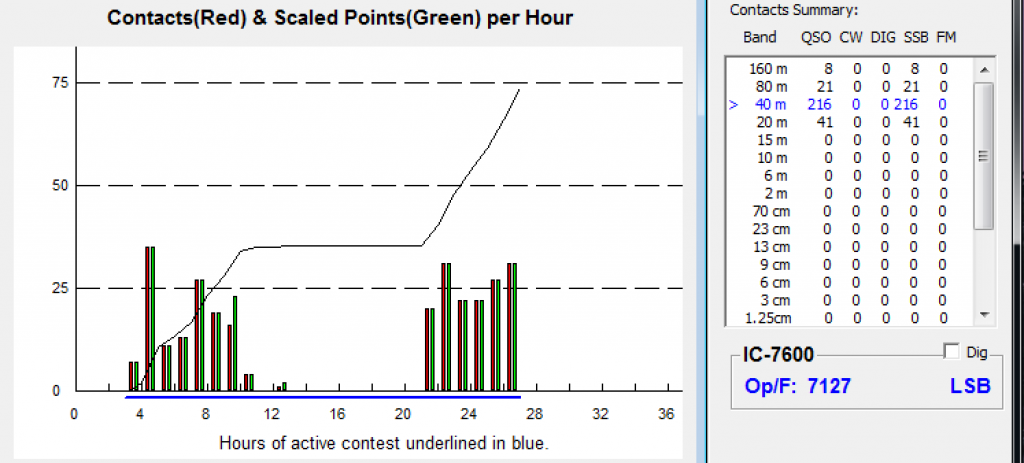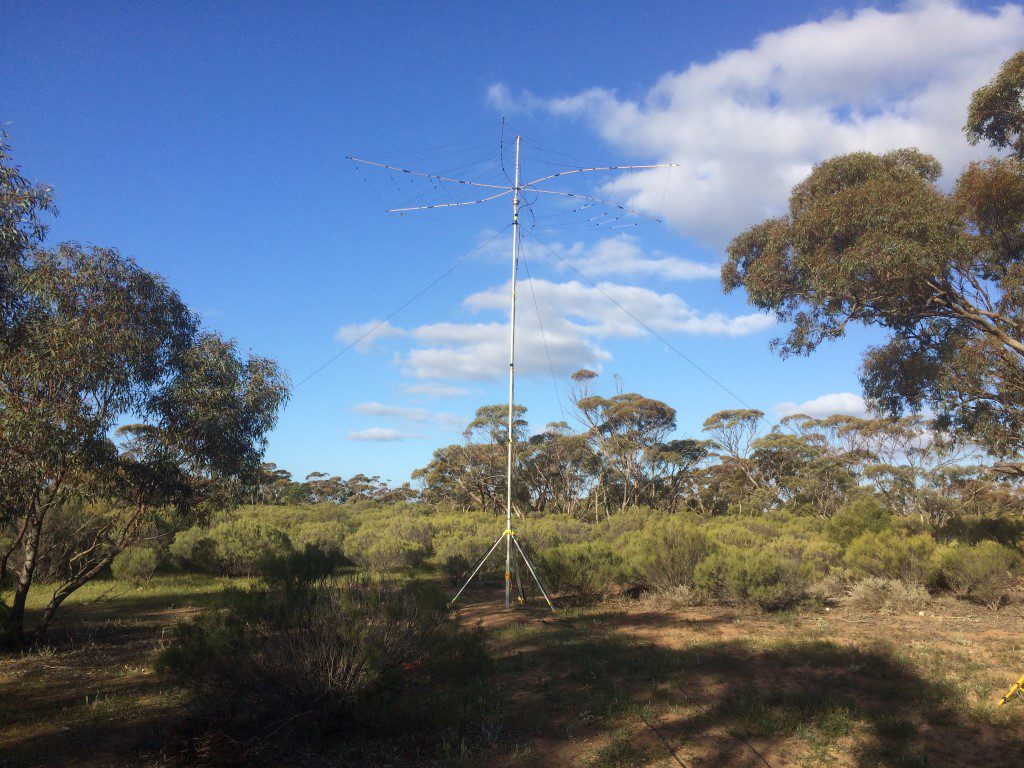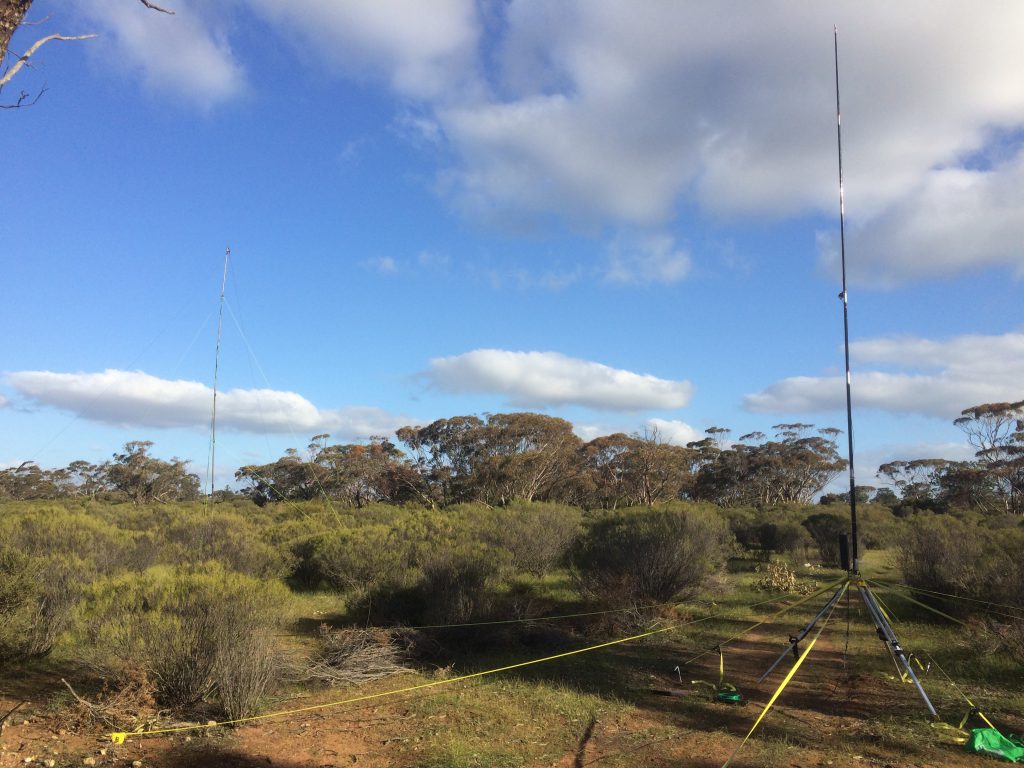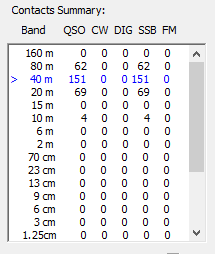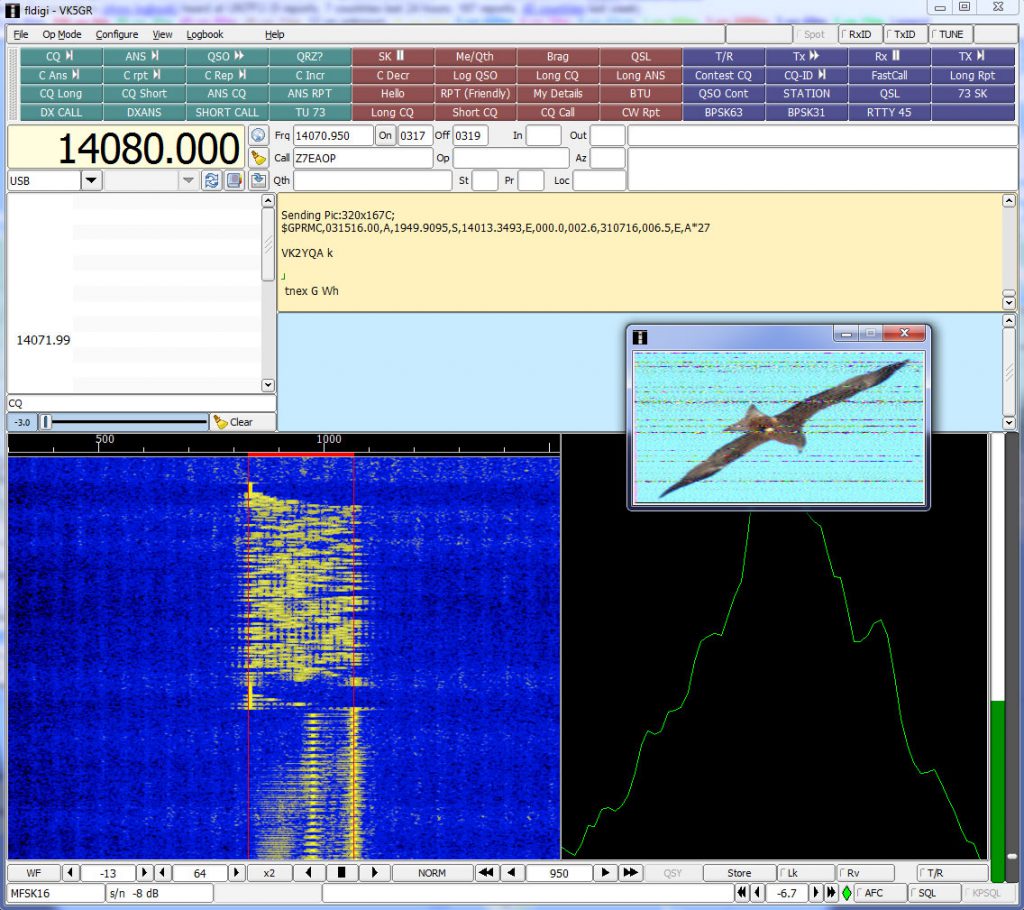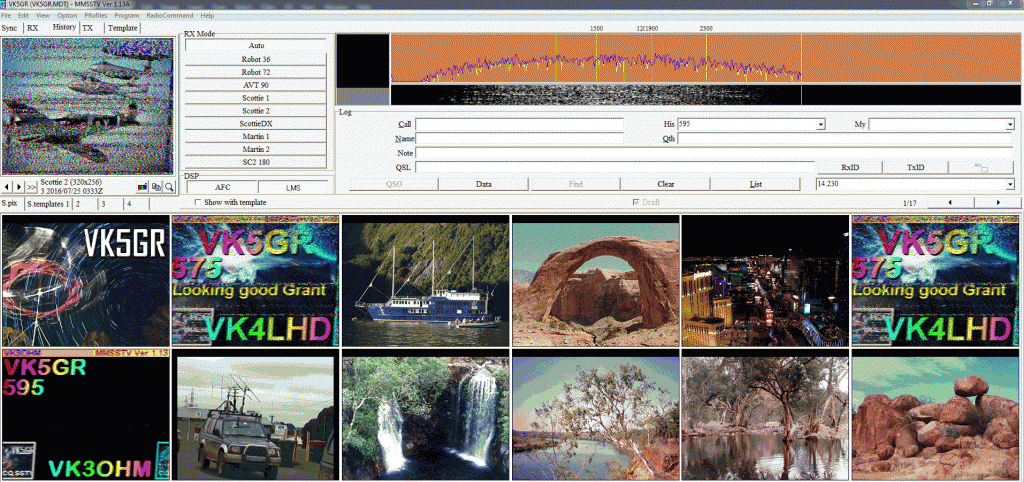AREG wishes to advise that the FreeDV HF digital voice WIA Broadcast relay will not be run this week due to the team being fully engaged with the Horus balloon flight. Service should resume next week at 10am ACST on 7177kHz.
Horus 37: Flight Currently GO for tomorrow morning!
Preparations are continuing to fly a large helium balloon this coming Sunday from Mt Barker in South Australia. AREG will be flying the balloon on behalf of LaunchBox who are undertaking a schools science education program.
Lift-off is planned for 10am, with a flight path that currently looks like it will orbit the eastern Adelaide hills.
The only risk to the launch currently is the low level weather forecast. The Adelaide Hills area has received yet another significant rain band this evening. If this hasnt cleared by morning the flight start could be delayed. Watch this website for the latest news.

Predicted flight path, as per 2016-09-17 06Z GFS model. (5m/s ascent rate, 3.5m/s descent rate, 34km burst altitude)
Amateur Radio operators across SA and western Victoria as far east as Melbourne should be able to hear the telemetry transmissions on 434.650 MHz using 100 baud RTTY (7N2). If you decode the transmissions using the dl-flDigi program, you can contribute your received frames to the global pool of tracking data enabling us to follow the flight.
You can find a guide to tracking the balloon flight using the dl-fldigi software at the following link: https://ukhas.org.uk/guides:tracking_guide
As usual, the payloads can be tracked live on the Habhub Tracker, available here.
As an added bonus, this flight will be carrying an experimental payload transmitting 115kbaud FSK on 441.200MHz, downlinking live images from the payload. This payload has been in development by David Rowe (VK5DGR) and Mark Jessop (VK5QI) for some time, and utilises an open source modem stack. If all works as expected, images should appear on this page: http://ssdv.habhub.org/VK5QI
Next AREG Meeting: Microwave Equipment and Operation
The next meeting of the Amateur Radio Experimenters Group will feature an introduction to Microwave Amateur Microwave Equipment and Communications, presented by guest lecturer, Iain Crawford VK5ZD. Iain will be talking about the gear he uses and some of the basic operating tips involved. This will provide the ideal opportunity to whet your appetite for these bands just as the sunspot cycle draws to a minimum on HF, and coincidentally right before the VHF/UHF contest season!

http://www.vk5zd.com/Images/Blog/IMGP4702.JPG
Iain has been experimenting with these modes for many years, and has constructed transverters for 23cm, 13cm, 9cm, 6cm and 3cm.
The meeting will be held at the Reedbeds Community Hall, Phelps Court, Fulham on Friday 16th September. Doors will open at 7.45pm with the presentation starting at 8.00pm.
After the talk, there will be coffee and cake and an opportunity to socialise with fellow amateur radio enthusiasts, followed by a short AREG business meeting.
All amateur radio operators and people with just an interest in radio in general are welcome to attend! We hope to see you there!
Project Horus Balloon Launch – Advanced Notice!
AREG members will again be involved 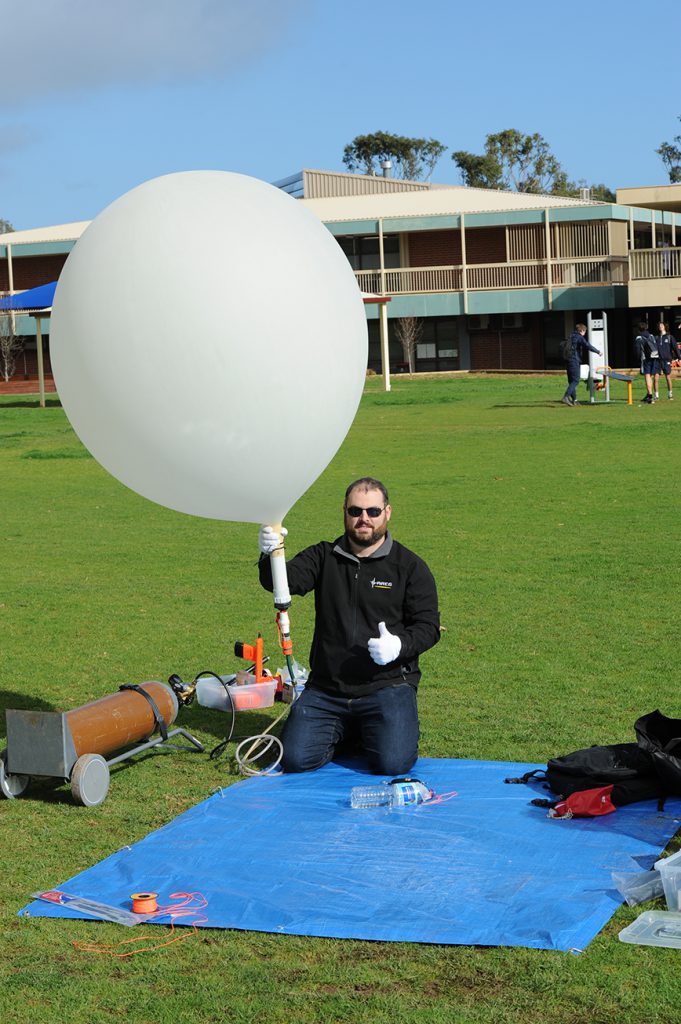 with Project Horus, undertaking another high altitude balloon flight for some high school students on Sunday September 18th.
with Project Horus, undertaking another high altitude balloon flight for some high school students on Sunday September 18th.
The Launch time will be 10.00am from Mt Barker, in the Adelaide Hills.
Amateur Radio operators from across SE Australia can get involved in the flight by contributing to the telemetry gathering effort. Tune your 70cm SSB radios to 434.650 and decode the RTTY telemetry using the dl-fldigi software.
Keep watching the AREG website for further details and confirmation of the flight day (flights can be cancelled up to 24hrs before liftoff if adverse weather is predicted).
VK5RSB Repeaters undergoing Maintenance – COMPLETED
The VK5RSB 70cm and 23cm repeaters may be off air for a period today whilst the mains power wiring at the site is worked on. Apologies for the short notice!
The 6m repeater should remain active as it is connected to the battery backup system on site.
AREG RD Contest 2016: Member Activity Report
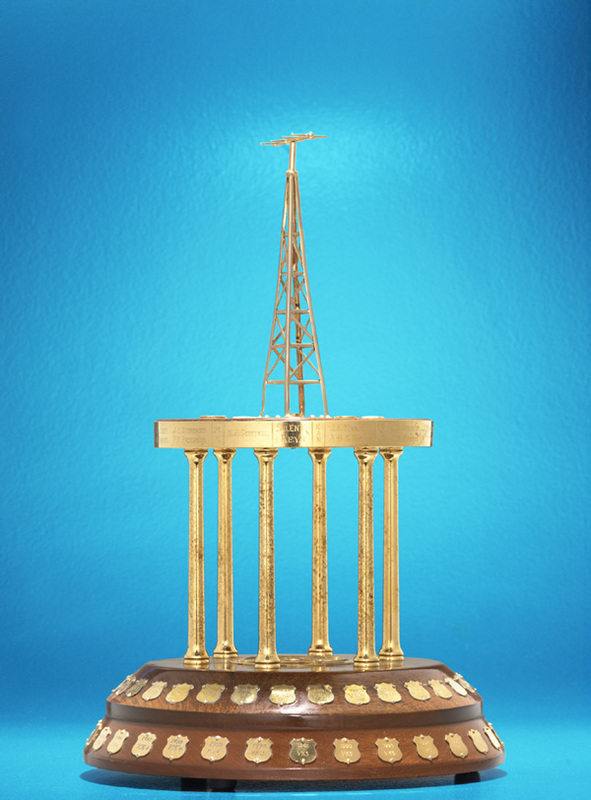
RD Contest Trophy
The Remembrance Day Contest for 2016 has come and gone. AREG was well represented this year with a number of home stations as well as three portable efforts making their presence felt across the bands.
Three members, VK5AKH, VK5MTM and VK5GR banded together to form a three station team this year. Named “AREG: Mostly Harmless!”, it gave the club an avenue to participate in the contest whilst also allowing individuals to also work for an individual score. It will be very interesting to see how they placed!
A further three members, VK5WTF, VK5QI and VK5KX also gave it a go! The following are the stories from those who took part:
Andrew VK5AKH – Portable Sedan
Andrew headed out to a remote site and set up a formidable station. He finished up with 286 contacts and 294points. it was a fair effort to built this station as a single op on Saturday morning and as hard as he was pushing he missed the start of the contest. The 3.5+ hours of assembly had its toll later in the evening when he was a little tired. Next time antennas will be set up on the Friday leaving me fresh for an evening. A good time was had…
Power
Home Away From Home
Operating Station
Antenna 20m
Grant VK5GR – Portable Tickera (Spencer Gulf)
During the contest, Grant made a point of operating for as many hours as possible, stopping only for ~1.5hrs around 5am for a quick nap. The effort paid off with 469 contacts and a total of 664 points (thanks to the graveyard shift multipliers). 160m paid off handsomely as well, with 41 contacts and almost a worked all VK Call areas in 8 hours (except for VK1 who didnt appear on the band). This was the first time Grant had operated on 160m and with luck now wont be the last!
Grant also experimented with RTTY this contest. While there were very few RTTY stations around, those he did work certainly helped his score, including his first 160m digital contact into VK4!
Theo VK5MTM – Home Station
Theo managed a Personal Best of 286 QSO’s/300 points. Operating from home, he had to battle solid S9 noise on 40m during the daytime and plasma TV noise 80% of the time on 20m (neighbour’s TV). Even so, a very respectable score was achieved!
Marcus VK5WTF – Portable Red Banks Conservation Park (near Burra)
Marcus (ex VK3TST) also headed out portable, but took a different slant on things. His intention was to go QRP phone from the get go, but to build a bigger than usual station. He also made the decision not to stay up, and admits that probably hurt his score, a lot, 83 points were gained in the hour before 6am.
Marcus’ Score was:
[table “” not found /]His radios included a Yaesu FT-817 (not the ND) and a Yaesu FT-857D.
Antennas: 80/40 fan dipole, 20/15 vertical, 20m sloping yagi (supposedly pointing west), 160m EFHW. As far as antennas went, the poor attempt at a sloping wire yagi was full of fail. It must have been so close to the ground that it turned into an inverted-V. Marcus is thinking of making a 20/15 moxon for next time.
He also indicated that the highlight of his contest was a 160m contact with VK2IO, both portable in parks running QRP! A distance of roughly 1100km.
The ability to run a second radio was thanks to VK5QI who loaned him a 100A AGM battery. The rest of the station (817 & laptop) coped with 2x 12Ah SLAs a few Li-Ion pack to top up the batteries and 10+18W solar system. The 857 was the only thing hooked up to the AGM battery.
Mark VK5QI – Home Station
Mark decided to try out his new antennas and amplifier to see how he went. His tally was
[table “” not found /]Mark commented that he was surprised:
- That I could actually work people on 160/80m. The long-wire does actually seem to work! (Now to find a SG-235…)
- The beam wasn’t that useful on 20m. I kept having to swing it around between VK6 and VK1/2/3/4, which got a bit annoying.
- 400W certainly makes it easy to be heard – If I could hear someone, I could work them!
Peter VK5KX – Home Station
Peter admits his was a token effort – but he had fun (which is the main thing!)
[table “” not found /]Overall, AREG was very well represented on the bands, and most of all everyone had fun!
See you next year on the Remembrance Day Contest!
Acknowledgements: Thanks to VK5AKH, VK5WTF, VK5GR, VK5MTM, VK5QI and VK5KX for their individual photo and text contributions to this article.
AREG Members entering RD Contest 2016
Members of the Amateur Radio Experimenters
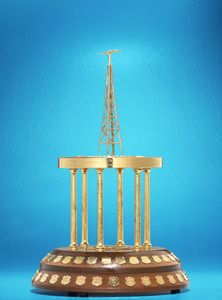
RD Contest Trophy
Group are banding together to form teams to participate in this year’s Remembrance Day Contest to be held on Saturday August 13th and Sunday August 14th 2016. The contest starts at 0300UTC and runs for 24hrs.
Andy VK5AKH, Theo VK5MTM and Grant VK5GR are forming one of the AREG teams. They will be operating from Sedan, Mansfield Park and Tickera respectively. Their team team is “AREG: Mostly Harmless”. We are hoping to field at least one other team as well!
Several of us are planning on operating in the mixed modes section as well, using both RTTY/CW and SSB. All participants are encouraged to listen for RTTY contacts throughout the contest.
Full details of the contest can be found on the WIA Website.
Next Meeting: August 19th – HF Digital Modes for Beginners
The next general meeting of the Amateur Radio Experimenters Group will be held on Friday August 19th. Doors open 7.45pm with the meeting starting at 8.00pm.
The topic for the evening will be “Introducing Digital Modes on HF – how to get started – from a beginner who just has”. I will be taking you through what can be achieved on a fairly modest HF station using digital modes, including what software you can use, what hardware you need and what some of the more “exotic” modes are that you can play with on HF digital, including:
- RTTY
- PSK31/63/125
- MFSK16
- Olivia
- Contestia
- Hellschrieber
- JT65/JT9 and WSJT
- SSTV
I will also discuss calling techniques, frequencies and contesting on HF as well as logging on rig integration.
I don’t profess to be an expert on these modes either – this is all relatively new (apart from RTTY) to me too (despite being licensed since the 1980s) as until March this year I had never had my own HF station. Having said that, even with a modest 100W station I have managed to work 62 countries using a variety of these modes, even in the relatively poor conditions on HF that we have seen over the last 6 months.
SSTV Pictures on 40 and 20m.
After the presentation there will be a light supper followed by the monthly business meeting.

